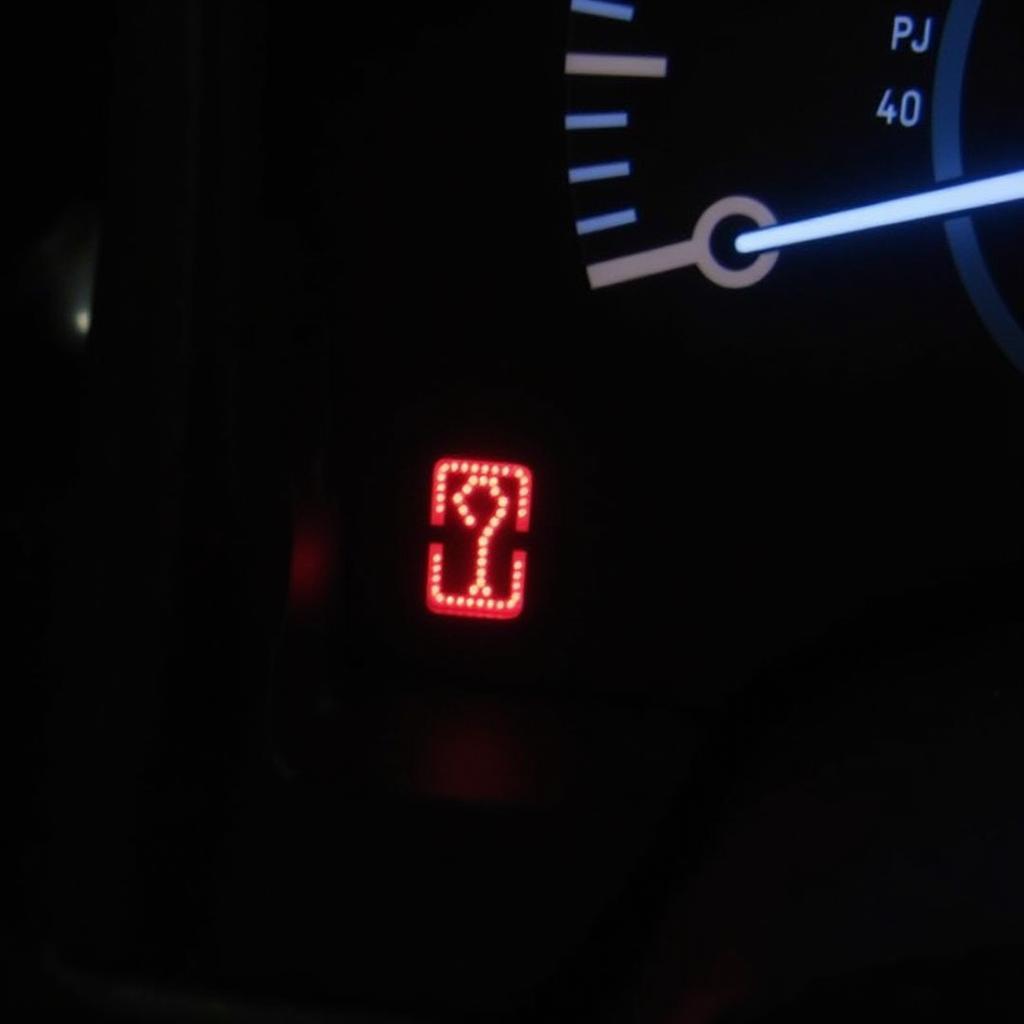The Ford Expedition brake warning light can be a jarring sight, signaling potential issues with your SUV’s braking system. Understanding why this light illuminates and knowing how to address the problem is crucial for your safety and the longevity of your vehicle. This article provides a comprehensive guide to troubleshooting and resolving Ford Expedition brake warning light issues. 1999 ford expedition brake warning light on
Common Causes of the Ford Expedition Brake Warning Light
Several factors can trigger the brake warning light on your Ford Expedition. These range from simple issues like low brake fluid to more complex problems involving the ABS system. Identifying the root cause is the first step towards a solution.
- Low Brake Fluid: This is the most common culprit. A leak in the brake lines or worn brake pads can deplete brake fluid levels, triggering the warning light.
- Worn Brake Pads: Thin brake pads reduce braking efficiency and can activate the warning light. Regular brake pad inspections are vital.
- Faulty ABS Sensor: A malfunctioning ABS (Anti-lock Braking System) sensor can disrupt the system and illuminate the warning light.
- ABS Module Issues: Problems with the ABS module itself, the system’s control unit, can also cause the warning light to appear.
- Parking Brake Engaged: Sometimes, the simplest explanation is the correct one. Ensure the parking brake is fully disengaged.
Diagnosing the Problem: A Step-by-Step Guide
- Check the Parking Brake: Make sure the parking brake is fully released.
- Inspect Brake Fluid Level: Locate the brake fluid reservoir and check the fluid level. If it’s low, add brake fluid to the recommended level.
- Examine Brake Pads: Visually inspect the brake pads for wear. If they appear thin, they likely need replacement.
- Scan for Diagnostic Trouble Codes (DTCs): Use an OBD-II scanner to retrieve any stored DTCs related to the braking system. This will provide valuable clues about the issue.
- Consult a Professional: If the problem persists, it’s best to consult a qualified mechanic specializing in Ford vehicles.
Ford Expedition Brake Warning Light and ABS Issues
The brake warning light can also indicate problems with the ABS system. While a functioning ABS is crucial for safe braking, especially in slippery conditions, a faulty ABS can compromise your safety.
“A common misconception is that the ABS light and the brake warning light are interchangeable. While they can be related, they often indicate different problems. Always prioritize safety and consult a professional for diagnosis,” advises John Miller, a seasoned automotive technician with over 20 years of experience.
Preventative Maintenance: Keeping Your Brakes in Top Shape
Regular maintenance is key to preventing brake issues. Follow these tips to keep your Ford Expedition’s braking system in optimal condition:
- Regular Brake Inspections: Have your brakes inspected at least once a year or every 12,000 miles.
- Timely Brake Pad Replacement: Replace brake pads before they wear down completely.
- Brake Fluid Flushes: Flush and replace brake fluid every two to three years to maintain its effectiveness.
- Check Brake Lines for Leaks: Regularly inspect brake lines for any signs of leaks or damage.
2012 ford expedition check brake system and advance track warnings
“Preventative maintenance is the best way to avoid costly repairs and ensure your Ford Expedition’s braking system operates flawlessly,” adds Sarah Johnson, a certified automotive instructor. “Ignoring warning signs can lead to more significant problems down the road.”
Conclusion
The Ford Expedition brake warning light is a crucial safety indicator. Addressing the underlying issue promptly ensures your safety and prevents further damage to your vehicle. By understanding the potential causes, following the diagnostic steps, and adhering to preventative maintenance practices, you can keep your Ford Expedition’s braking system in top condition and enjoy peace of mind on the road. ford expedition brake warning ligh Don’t ignore the warning light; take action to ensure safe and reliable braking.


